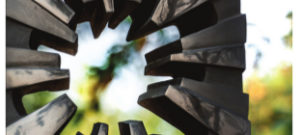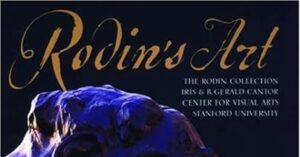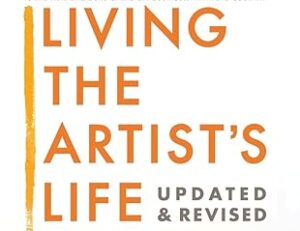
Home » Journal Articles » Book Reviews » The Stone Book – Jan/Feb 1996
Art & Fear, Observation On the Perils (and Rewards) of Artmakin:, by David Bayles and Ted Orland, 1993, Published by Capra Press, Santa Barbara, CA

This is a thought-provoking book about the practical aspects of the psychology of making art. The word “art” is used here in the general sense to include music, performing art, writing and visual art (two and three dimensional); however, throughout the book, you will find yourself saying, “Yes, I can understand that; that’s how I feel”. While the examples described are specific to one or another art form, the universality of the truths sinks in personally.
This is not a self-help work book, as is “The Artist’s Way”. It deals with the art making process and how we grapple with the problems of that process–by making personal choices regarding the practical, as well as the creative aspects of our art.
The author’s purpose is not clearly stated in this succinct (122 pages) and on-target book; however, it appears to be that artists need not worry about producing great art or art for admiration; create the art that is meaningful to you. As they summarize, “The best you can do is make art you care about–and lots of it. “
The authors, Bayles and Orland, are both photographers and long — time friends, so they bring a wealth of personal experience to the table. They started a seven-year book writing process as visual artists and finished as literary artists. Their insight into the creation of this collaborative effort is also intriguing.
The book is divided into two parts. The first half is mostly concerned with inner issues of self, whereas part two looks at connections with the outside world; in reality the two are inextricably mixed. The plethora of examples, from the authors’ and other artists’ lives, continuously supplies a stream of real worldliness to the dialogue. My favorite anecdote in the book concerns a ceramics teacher who divided a class into two groups at the first meeting. One group would be graded on the quantity of their work and the other on the quality of their work. When grading time came at the end of the class, an interesting phenomenon occurred: the pieces of highest quality were produced by the “quantity” group, because they had made mistakes, learned from them and grown through the process. The “quality” group had become too obsessed with achieving perfection in a single piece.
Throughout this book are jewels of insight that keep you on edge, waiting for the next tingle of excitement to go rippling from head to toe. You don’t have to be an artist to appreciate Art & Fear. An artist friend borrowed my copy, and after reading it, bought four copies to give to friends and relatives to read as a guide for life.
Halfway through the reading, I became bothered by the second half of the book’s title. This was because the book does not dwell on the fear aspect, as much as it looks to the positive side of art creation. In other words, it’s not the morose side, but the can-do side of art making.
Unless you haven’t been paying attention, I liked this book and would highly recommend it to any artist who wants to understand the psyche of art making and the secrets to staying on a productive and rewarding path of creation.
On Amazon: https://a.co/d/17Zt7L0







We need some kind of descriptive text here.